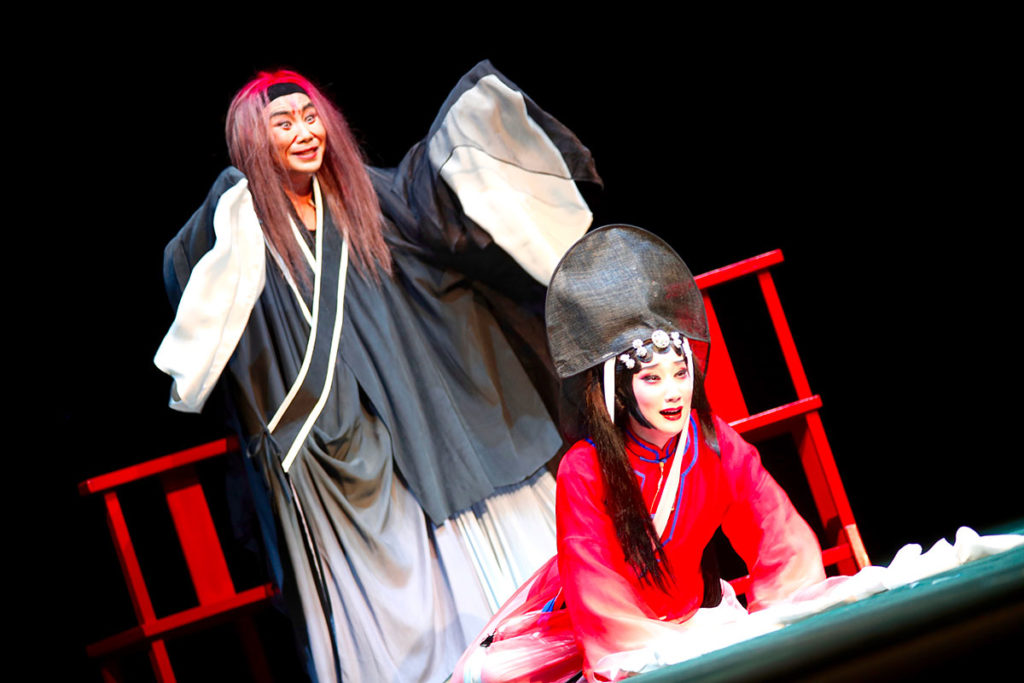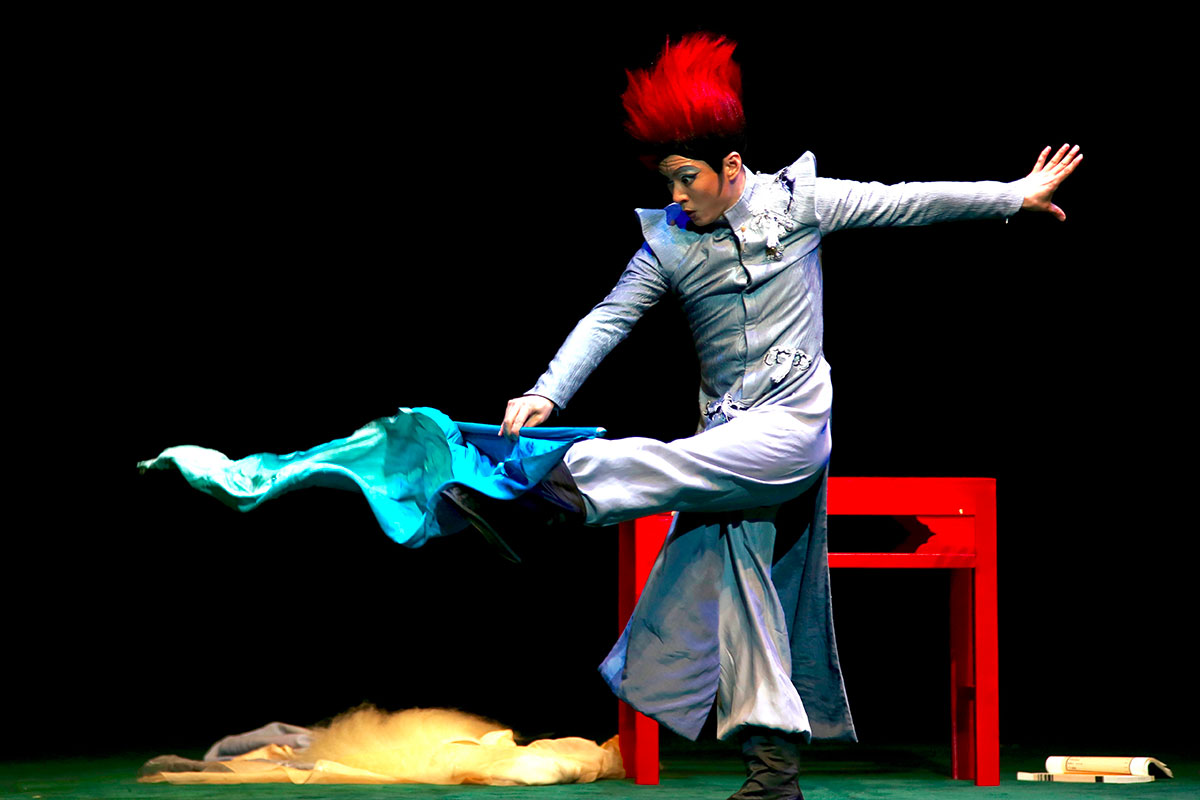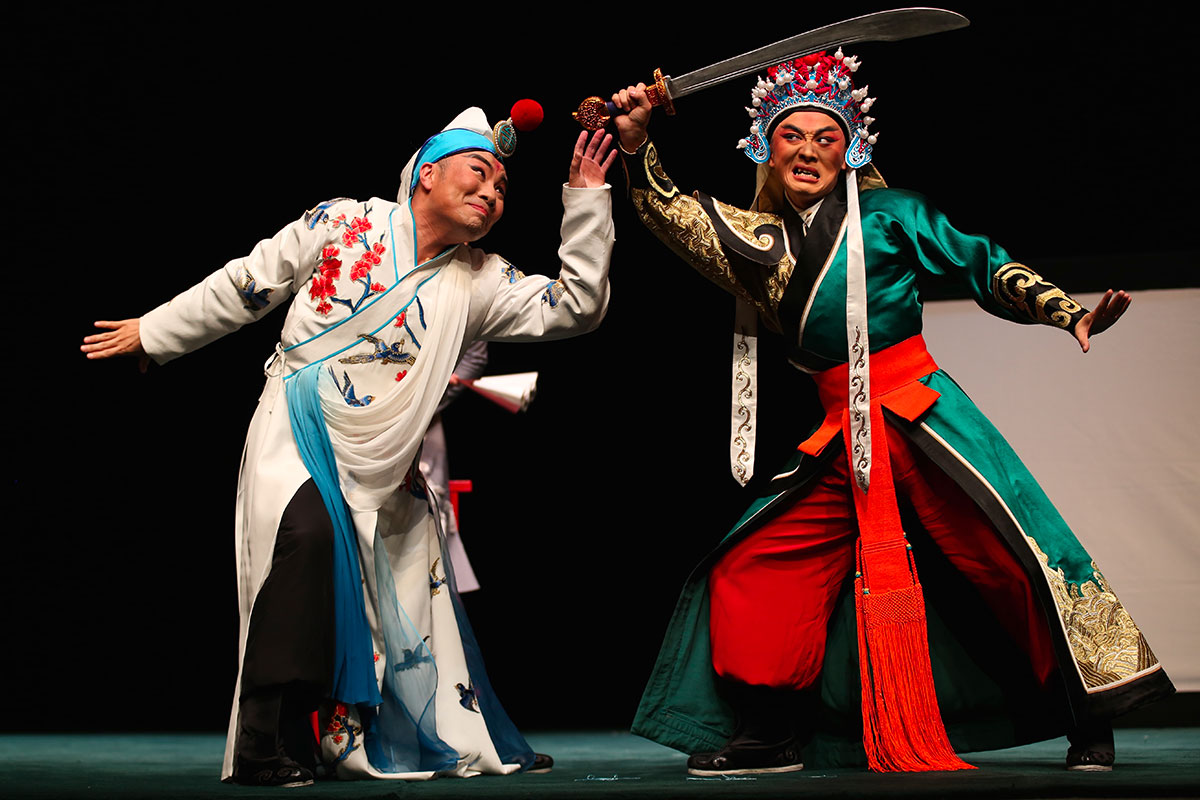FAUST – A Research on the Language of Beijing Opera
text by Li Meini based on the tragic play “Faust, Part One” by Johann Wolfgang Goethe
Translation Fabrizio Massini
Concept and Direction Anna Peschke
Assistant Director Xu Mengke
Original Music
Luigi Ceccarelli
Alessandro Cipriani
Chen Xiaoman
with
Liu Dake – Faust
Xu Mengke – Valentin
Wang Lu – Mephistopheles
Zhang Jiachun – Gretchen
Musicians
Vincenzo Core (Electric Guitar and Live Electronics)
Wang Jihui (jinghu)
Niu LuLu (gong)
Laura Mancini (percussions)
Ju Meng (yueqin)
Giacomo Piermatti (Double Bass)
Wang Xi (bangu)
Set Design Anna Peschke
Stage Lights Tommaso Checcucci
Costumes Akuan
Make-Up Li Meng
Technical Director Robert John Resteghini, Head Stagehand Massimo Abbondanza, Stagehand Alfonso Pintabuono, Head Electrician Tommaso Checcucci, Sound Engineer Giampiero Berti, Tailor Li Jian
Set design elements were built in Emilia Romagna Teatro Lab by Gioacchino Gramolini Emilia Romagna Teatro Fondazione / China National Peking Opera Company
World Premiere Bologna, Arena del Sole, 8 -14 ottobre 2015 – VIE Festival 2015
Modena, Teatro delle Passioni, 20 -25 ottobre 2015 – VIE Festival 2015





While tackling an ancient tradition such as Chinese Opera you can discover many unexpected aspects of it. For instance you could realize how shallow could be to consider pentatonic music as “simple music”. When you work together with professional Chinese musicians you discover many aspects of rhythmic complexity in those melodies and the extreme indissoluble bond between those rhythmic patterns the physical movements and phrasing of the actors.
We decided to respect that organic world made of text, theatre, motion and music, by creating a different layer, parallel to the Chinese one, but completely integrated. We realized many timbre expansions of the sounds of the Chinese instruments and of the Italian ones with the intention of finding their common elements, to represent a kind of mutual need of each other to find new possibilities for both musical languages.
The electronic parts are only made by processing the sounds coming from the Chinese and Italian instruments.
This way, the use of electronics represents a sort of magnifying lens by which you can listen to those instruments in a different way, a magnifying lens as a bridge between cultures. The electronics is also used to set and move the sounds in a multidimensional sound space, to form the acoustic environment of the narration which evolves along with the drama.
Luigi Ceccarelli e Alessandro Cipriani

